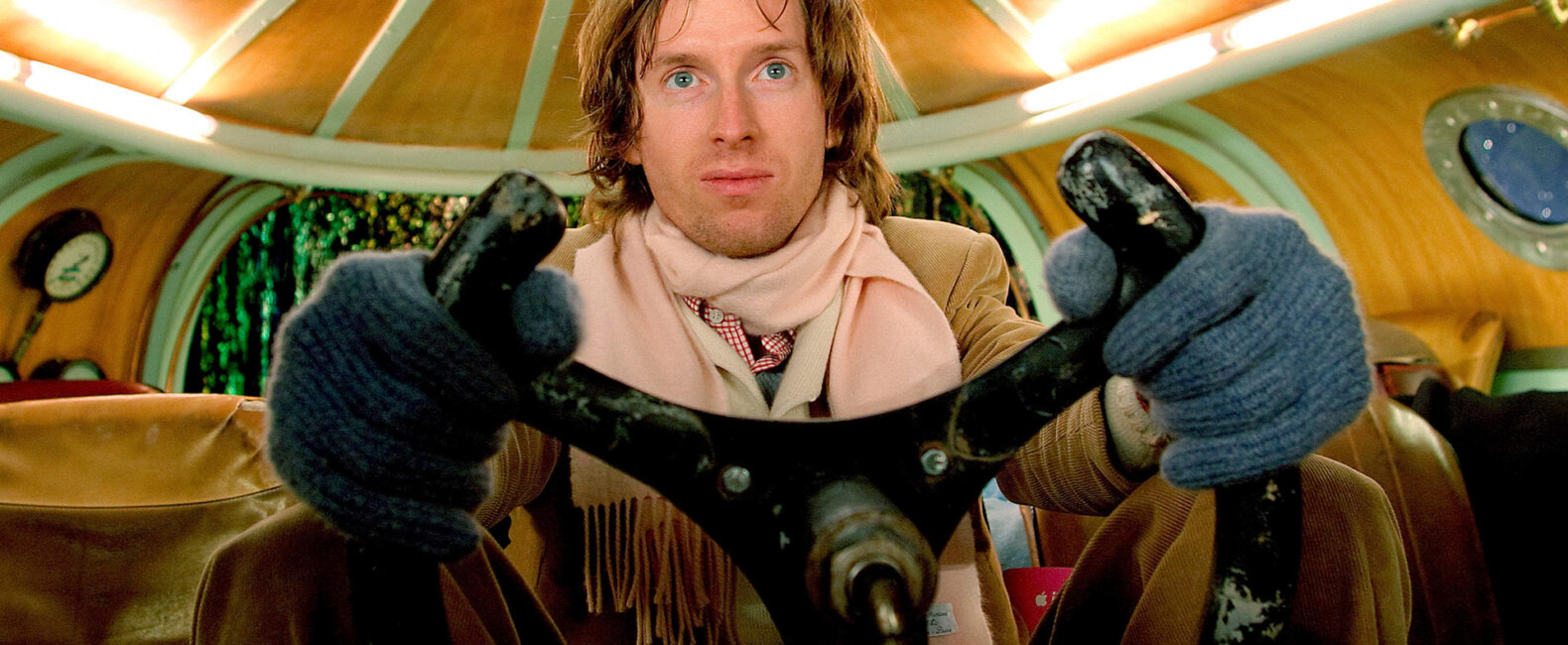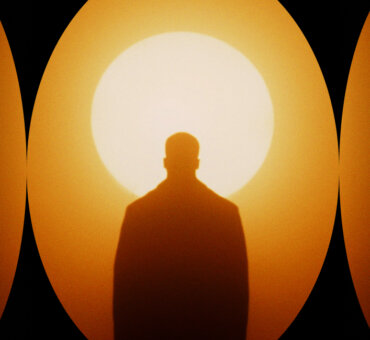Wes Anderson is a divisive director. Some moviegoers resonate with his idiosyncratic style, while others loathe it. But wherever you land on the spectrum, you can’t deny how masterfully he utilizes music. We take a deep dive into his uncanny ability for finding just the right song for just the right moment, whether that’s how he distinguishes between songs and scores or how he uses music as a way to interpret the stories he tells.
When to Use a Score Versus a Song
From his first feature film Bottle Rocket to his latest achievement Isle of Dogs, Anderson uses a combination of a score and a soundtrack in every work. No matter the project, the director has a meticulous plan for how he will use the two together–and it always depends on the moment.
When it comes to scores, Anderson works primarily with Devo frontman Mark Mothersbaugh and French composer Mark Alexandre Desplat, who also composed The Curious Case of Benjamin Button and The Shape of Water. Anderson only deviated from these two composers on one film, The Darjeeling Limited, for which he used the scores of famous Indian director and composer Satyajit Ray to honor the culture in which the movie is set.
Anderson and his music supervisor, Randall Poster, collaborate with Mothersbaugh, Desplat and others to make original music that compliments and supplements the story–usually the tone or the setting–while using existing music to overtake the story.
Anderson uses scores in the background, careful not to steal attention away from the moment or scene, while he uses soundtracks in the foreground, to purposefully overtake the moment or scene. The latter allows for the song to become a character in and of itself, with a life and story of its own. Though Anderson doesn’t establish a hard and fast rule, it’s something for filmmakers to note as a potential way of deciding when to use a score or soundtrack in your film: scores for background and soundtracks for foreground.
If you are looking for a great score for your project, check out our Cinematic Playlist.
Making Your Film Feel Timeless
It’s hard to think of another director who uses oldies as frequently and effectively as Anderson. He’ll use everything from radio hits to deep cuts and hidden gems from the likes of The Kinks, Cat Stevens, The Zombies and The Beach Boys.
Anderson creates nostalgia, not necessarily to take viewers back to a certain time or place but to establish a universality and timelessness, getting his films out of the here and now. If you didn’t know the release date, for example, you might have trouble dating his movies–and that’s a good thing.
The way Anderson uses timeless music should urge filmmakers to consider the limitations that might exist when only using modern music and how that fixes their work in a specific context and sometimes even puts a ceiling on their work. As his filmography pays testament, Anderson helps us see the power of nostalgia.
If you are looking for music that sounds old and timeless, check out our Soul Playlist.
The Timing of Anderson’s Music
Anderson’s approach to music ultimately hinges on timing. If the sound is not working precisely together with the image, nothing else matters. He accomplishes his seamless timing in three distinct ways: in the use of montage, slow motion and by always connecting a theme in his story directly to a song.
Music and Montage
First, let’s talk about montage. Anderson uses it in every one of his movies, and it’s one of the primary places where we see his musical selections come to life. Some of the most pertinent and poignant musical moments emerge when the dialogue fades, and Anderson brings together a momentous song with a series of cuts.
The Royal Tenenbaums
“Judy is a Punk” by The Ramones paired with Margot Tenenbaums background story is a montage that tells the background story of Margot being a smoker, showing how wild and “punk rock” of a life she’s lead, always operating by the beat of her own drum. This less popular song by The Ramones not only gives the scene an energy and humor, but it tells us so much about the character of Margot.
The Darjeeling Limited
“Play with Fire” by The Rolling Stones paired with The Brothers’ Reunion With Their Mother in India is a montage that starts by panning to each member of the family, as they work out their differences through a silent ritual, but then gives us an update on other characters in the narrative. The song by the Stones couldn’t be more fitting for the montage. There’s allure and mystery to it that feels ominous, and the lyrics point to the reality that the brothers, and every other character, has opened the lid to decisions and situations that will change their lives forever.
Taking a lesson from Anderson, filmmakers should consider how they’re connecting montage and music. This is an opportunity to make a particular song stand out; it’s probably the best spot to place your most powerful track.
Music and Slow-Motion
Second, let’s talk about slow-motion. There probably isn’t a director working today who has achieved as many cathartic, poignant slow-mo moments as Anderson, moments that would never be achieved without the right music. This music comes in at the perfect moment and guides the steady movement of the characters, while subtly spelling out how we might see and interpret the moment.
Rushmore
“Ooh La La” by Faces is the Final Dance with main characters, Max and Rosemary, in Anderson’s second feature. The film ends with a heartwarming dance scene, where the protagonist has a meaningful dance with the older school teacher who broke his heart. Using slow motion to focus the shot on the interactions of the characters and to create a pause in the film, Anderson brings the moment together with this iconic song about growing up. It not only communicates the epiphany that Max has experienced, in his coming of age story, but several of the other characters, as well.
The Life Aquatic with Steve Zissou
“Queen Bitch” by David Bowie in The Life Aquatic with Steve Zissou tells the story of Steve walking out of the theatre. This conclusion to the movie features Bill Murray’s character, Steve Zissou, walking down a road. It’s a paradoxical moment, given the mix of music and visuals. The slow mo and the energy of Bowie’s hit make Zissou seem triumphant. Yet, his character arch and the lyrics focus on loss and sadness. This juxtaposition mutes out the noise, literally and figuratively, and helps us actually make sense of the movie.
As Anderson proves, slow-motion moments are important for drawing out a particular theme. They also present the perfect time to highlight a specific lyric or line from a song that you want the audience to hear, process and connect to the focus of the shot.
Music and Theme
Anderson always connects the lyrics or the ideas behind a song to the heart of his movie or a particular moment. This allows the song to function as a set of lenses that help us view or interpret his movie.
Filmmakers, in particular, should consider Anderon’s approach, specifically how songs can serve as more than a technical device to move along the pace of a film or to make a particular scene more entertaining or emotionally compelling. Songs, especially when used in conjunction with distinct camera and editing techniques like slow motion and montage, become commentary for how you want viewers to see and think about your work. In this sense, they act as a central part of the narrative, becoming as big and significant as the characters themselves.
Learning From the Best
Anderson and his films demonstrate the unending possibilities of how a score and a soundtrack can not only supplement but carry forward a scene, story or character. So, whether you’re working in advertising, making narrative films or shooting weddings, filmmakers should pay close attention to the music of Wes Anderson. The director serves as a great model for creating a beautiful, cathartic collision of sight and sound within filmmaking; there’s so much that we can glean from his technique.
For more on the work of director Wes Anderson, check out our interview with his go-to Art Director, Carl Sprague.





















































































